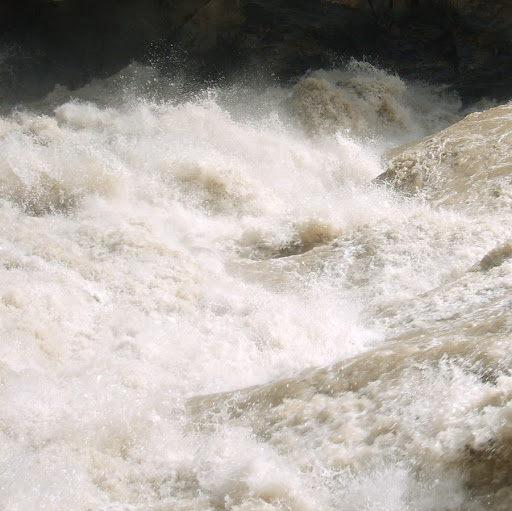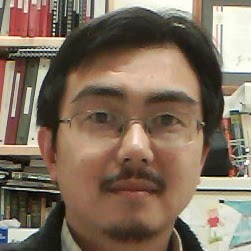Wei Hung Cai
age ~57
from Brooklyn, NY
- Also known as:
-
- Wei H Cai
- Wei Huang Cai
- Weihung H Cai
- Wei Hung Cal
- Hung Cai Wei
- Hung Cai Weihung
- Wei Chen
- Wei Cao
- Phone and address:
- 1472 85Th St, Brooklyn, NY 11228
Wei Cai Phones & Addresses
- 1472 85Th St, Brooklyn, NY 11228
- Staten Island, NY
- La Jolla, CA
- San Francisco, CA
- Richford, NY
Resumes

Test & Validation Engineer At Motorola
view sourceLocation:
Greater New York City Area
Industry:
Telecommunications

Wei Ming Jimmy Cai
view source
Wei Cai
view source
Wei Cai
view source
Wei Hao Cai
view source
Wei Cai
view source
Wei Cai
view source
Wei Cai
view sourceLawyers & Attorneys
Us Patents
-
Methods Of Improving Line Of Sight Wireless Optical Communication Through Adverse Environmental Conditions
view source -
US Patent:7106972, Sep 12, 2006
-
Filed:Apr 4, 2002
-
Appl. No.:10/116194
-
Inventors:Robert R. Alfano - Bronx NY, US
Jin Pin Ying - Fresh Meadow Lane NY, US
Swapan K. Gayen - Marlboro NJ, US
Wei Cai - Bronx NY, US -
Assignee:The Research Foundation of the City University of New York - New York NY
-
International Classification:H04B 10/00
-
US Classification:398158, 398159, 398119
-
Abstract:A method of improving a signal-to-noise (S/N) ratio for a light signal transmitted by wireless optical communication through adverse environmental conditions, the light signal including a snake component and a ballistic component for carrying coded information, and a diffusive component that adds to background noise, the method comprising the steps of: encoding information to be transmitted by the light signal, wherein the light signal is one of a serial train of code pulses or a modulated light beam; selecting an appropriate wavelength for the encoded light signal; transmitting the encoded light signal though the adverse environmental conditions; receiving the encoded light signal; sorting the received encoded light signal to preferentially select the information carrying components and reduce the diffusive component; and detecting the sorted encoded light signal with a photo-detector.
-
Hybrid-Dual-Fourier Tomographic Algorithm For A Fast Three-Dimensionial Optical Image Reconstruction In Turbid Media
view source -
US Patent:7218959, May 15, 2007
-
Filed:Jun 5, 2003
-
Appl. No.:10/456264
-
Inventors:Robert R. Alfano - Bronx NY, US
Wei Cai - Bronx NY, US -
Assignee:Research Foundation of City University - New York NY
-
International Classification:A61B 6/00
-
US Classification:600476, 600310, 600473
-
Abstract:A reconstruction technique for reducing computation burden in the 3D image processes, wherein the reconstruction procedure comprises an inverse and a forward model. The inverse model uses a hybrid dual Fourier algorithm that combines a 2D Fourier inversion with a 1D matrix inversion to thereby provide high-speed inverse computations. The inverse algorithm uses a hybrid transfer to provide fast Fourier inversion for data of multiple sources and multiple detectors. The forward model is based on an analytical cumulant solution of a radiative transfer equation. The accurate analytical form of the solution to the radiative transfer equation provides an efficient formalism for fast computation of the forward model.
-
Time-Resolved Diffusion Tomographic 2D And 3D Imaging In Highly Scattering Turbid Media
view source -
US Patent:59317892, Aug 3, 1999
-
Filed:Feb 7, 1997
-
Appl. No.:8/797028
-
Inventors:Robert R. Alfano - Bronx NY
Wei Cai - Bronx NY
Feng Liu - Bronx NY
Melvin Lax - Summit NJ
Bidyut B. Das - Flushing NY -
Assignee:The Research Foundation City College of New York - New York NY
-
International Classification:A61B 500
-
US Classification:600473
-
Abstract:A method for imaging objects in highly scattering turbid media. According to one embodiment of the invention, the method involves using a plurality of intersecting source/detectors sets and time-resolving equipment to generate a plurality of time-resolved intensity curves for the diffusive component of light emergent from the medium. For each of the curves, the intensities at a plurality of times are then inputted into the following inverse reconstruction algorithm to form an image of the medium: ##EQU1## wherein W is a matrix relating output at source and detector positions r. sub. s and r. sub. d, at time t, to position r,. LAMBDA. is a regularization matrix, chosen for convenience to be diagonal, but selected in a way related to the ratio of the noise, to fluctuations in the absorption (or diffusion) X. sub. j that we are trying to determine:. LAMBDA. sub. ij =. lambda. sub. j. delta. sub. ij with. lambda. sub. j =/
-
Time-Resolved Diffusion Tomographic Imaging In Highly Scattering Turbid Media
view source -
US Patent:58139885, Sep 29, 1998
-
Filed:Mar 18, 1996
-
Appl. No.:8/618471
-
Inventors:Robert R. Alfano - Bronx NY
Wei Cai - Bronx NY
Feng Liu - Bronx NY
Melvin Lax - Summit NJ
Bidyut B. Das - Flushing NY -
Assignee:Research Foundation - New York NY
-
International Classification:A61B 500
-
US Classification:600476
-
Abstract:A method for imaging objects in highly scattering turbid media. According to one embodiment of the invention, the method involves using a plurality of intersecting source/detectors sets and time-resolving equipment to generate a plurality of time-resolved intensity curves for the diffusive component of light emergent from the medium. For each of the curves, the intensities at a plurality of times are then inputted into the following inverse reconstruction algorithm to form an image of the medium: X. sup. (k+1). spsp. T =�Y. sup. T W+X. sup. (k). spsp. T. LAMBDA. !�W. sup. T W+. LAMBDA. !. sup. -1 wherein W is a matrix relating output at detector position r. sub. d, at time t, to source at position r. sub. s,. LAMBDA. is a regularization matrix, chosen for convenience to be diagonal, but selected in a way related to the ratio of the noise, to fluctuations in the absorption (or diffusion) X. sub. j that we are trying to determine:. LAMBDA. sub. ij =. lambda. sub. j. delta. sub. ij with. lambda. sub.
-
Time-Resolved Diffusion Tomographic 2D And 3D Imaging In Highly Scattering Turbid Media
view source -
US Patent:61085766, Aug 22, 2000
-
Filed:Feb 10, 1997
-
Appl. No.:8/797163
-
Inventors:Robert R. Alfano - Bronx NY
Wei Cai - Bronx NY
Swapan K. Gayen - Marlboro NJ -
Assignee:The Research Foundation of City College of New York - New York NY
-
International Classification:A61B 600
-
US Classification:600476
-
Abstract:A method for imaging objects in highly scattering turbid media. According to one embodiment of the invention, the method involves using a plurality of intersecting source/detectors sets and time-resolving equipment to generate a plurality of time-resolved intensity curves for the diffusive component of light emergent from the medium. For each of the curves, the intensities at a plurality of times are then inputted into the following inverse reconstruction algorithm to form an image of the medium: wherein W is a matrix relating output at source and detector positions r. sub. s and r. sub. d, at time t, to position r,. LAMBDA. is a regularization matrix, chosen for convenience to be diagonal, but selected in a way related to the ratio of the noise, to fluctuations in the absorption (or diffusion) X. sub. j that we are trying to determine:. LAMBDA. sub. ij =. lambda. sub. j. delta. sub. ij with. lambda. sub. j =/
-
Time-Resolved Optical Backscattering Tomographic Image Reconstruction In Scattering Turbid Media
view source -
US Patent:62053531, Mar 20, 2001
-
Filed:Dec 22, 1998
-
Appl. No.:9/218199
-
Inventors:R. R. Alfano - Bronx NY
Wei Cai - Bronx NY
Melvin Lax - Summit NJ -
Assignee:Research Foundation of CUNY - New York NY
-
International Classification:A61B 505
-
US Classification:600476
-
Abstract:A method for imaging objects in a highly scattering turbid medium, such as breast, brain, prostate in human body and clouds, smoke in atmosphere environment, using backscattered light. The method involves using a group of sources and detectors setting on same side of medium to generate a plurality of time-resolved intensity data of backscattered light from the medium. The inverse computation using a reconstruction algorithm, taking the measured data as input, produces a three-dimensional image map of the internal structure of a turbid medium. The invention teaches (1) developing an accurate analytical solution of the Boltzmann photon transport equation in a uniform infinite medium, and its extension to the case of a semi-infinite medium, which serves as a background Green's function for the forward model; (2) building a forward physical model of relationship between measurement of backscattered light and inhomogeneity structure of the medium; (3) designing an inverse algorithm for backscattering tomography; (4) designing experimental setups for breast tumor detection using backscattering tomography; (5) using fsec, psec, and nsec laser pulse with different wavelengths in the near infrared spectral region; and (6) using pico-second time gating system as detectors to collect time-slicing data.
-
Time Reversal Optical Tomography For Locating Targets In A Highly Scattering Turbid Medium
view source -
US Patent:20140114181, Apr 24, 2014
-
Filed:Oct 22, 2013
-
Appl. No.:14/060221
-
Inventors:- New York NY, US
Wei Cai - Bronx NY, US
Swapan K. Gayen - Marlboro NJ, US -
International Classification:A61B 5/00
-
US Classification:600425
-
Abstract:A time reversal optical tomography (TROT) method for near-infrared (NM) diffuse optical imaging of targets embedded in a highly scattering turbid medium is presented. TROT combines the basic symmetry of time reversal invariance and subspace-based signal processing for retrieval of target location. The efficacy of TROT is tested using simulated data and data obtained from NIR imaging experiments on absorptive, scattering and fluorescent targets embedded in Intralipid-20% suspension in water, as turbid medium, as well as, a realistic cancerous model breast assembled using ex vivo human breast tissues with two embedded tumors. The results demonstrate the potential of TROT for detecting and locating small targets in a turbid medium, such as, breast tumors in early stages of growth.
Isbn (Books And Publications)


Name / Title
Company / Classification
Phones & Addresses
President
Broad Trade Construction
Nonresidential Construction
Nonresidential Construction
43 18 Main St, Flushing, NY 11355
7188880689
7188880689
President
N B PLUMBING & HEATING INC
Plumbing/Heating/Air Cond Contractor
Plumbing/Heating/Air Cond Contractor
43-18 Main St SUITE 1F/2F, Flushing, NY 11355
4318 Main St, Flushing, NY 11355
7188880689
4318 Main St, Flushing, NY 11355
7188880689
Chief Executive Officer
BROADTRADE PLUMBING & HEATING INC
Plumbing/Heating/Air Cond Contractor
Plumbing/Heating/Air Cond Contractor
43-18 Main St STE 1F & 2ND FL, Flushing, NY 11355
4318 Main St, Flushing, NY 11355
7188866829
4318 Main St, Flushing, NY 11355
7188866829
Principal
Laundry De Point Incorporated
Coin-Operated Laundry
Coin-Operated Laundry
2007 127 St, Flushing, NY 11356
Principal
Jian Hua Construction Inc
Single-Family House Construction
Single-Family House Construction
121 Henry St, New York, NY 10002
Principal
NEW LI CONSTRUCTION INC
Single-Family House Construction
Single-Family House Construction
90 Pitt St APT 5E, New York, NY 10002
Wikipedia References

Wei Cai
Plaxo

wei cai
view sourceLiaoyuan teachers' college
Googleplus

Wei Cai
Work:
NSN - SW engineer (2010)
Education:
Xi'an Jiaotong University - EE, Wuhan University - EE
About:
Cai wei-ivan from NSN
Tagline:
Don't loss, do not loss
Bragging Rights:
Don't loss, do not loss

Wei Cai
Work:
Seagate Technology

Wei Cai

Wei Cai

Wei Cai

Wei Cai

Wei Cai

Wei Cai
Classmates

O'Bryant/Math & Scien...
view sourceGraduates:
Song Wei Cai (1997-2001),
Moen Moen (1989-1993),
Mary Alice Leone (1998-2002),
Val Alves (1982-1986)
Moen Moen (1989-1993),
Mary Alice Leone (1998-2002),
Val Alves (1982-1986)

Li Wei Cai
view source
Wei Min Cai
view source
Wei Yuan Cai
view source
Wei Cai
view source
Wei Cai
view source
Wei Cai
view source
Wei Cai
view source
Wei Bo Cai
view sourceFlickr
Youtube
Get Report for Wei Hung Cai from Brooklyn, NY, age ~57










![[Eng Sub] Zhang Qu - Cai Wei | Random Song Rando... [Eng Sub] Zhang Qu - Cai Wei | Random Song Rando...](https://i.ytimg.com/vi/pgDAQU5eYA0/hq720.jpg?sqp=-oaymwEcCNAFEJQDSFXyq4qpAw4IARUAAIhCGAFwAcABBg==&rs=AOn4CLDgnA0kpFrdnY7gnoIZVmA_QqYOWw)


